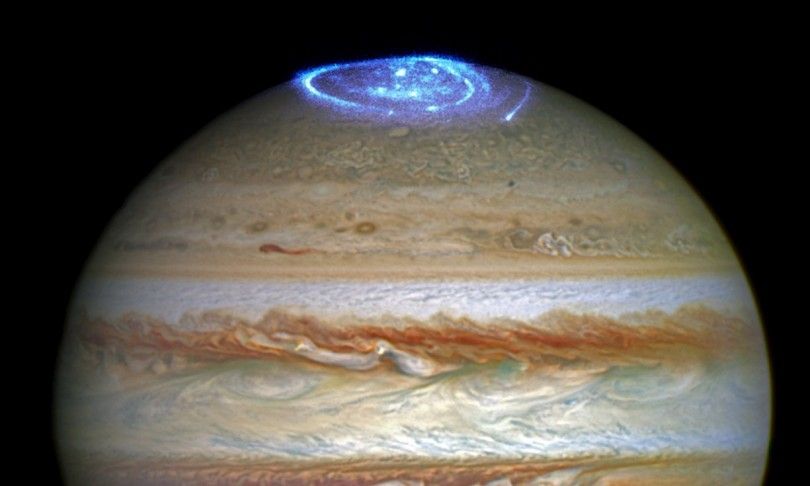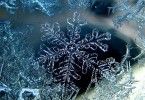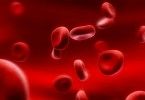С помощью мощного телескопа “Хаббл” астрономы из НАСА получили изображения невероятно интенсивного сияния на Юпитере, которое внешне напоминает целую галактику, пишет The Guardian.
Astronomers have used the powerful Hubble space telescope to capture images of the luminous auroras that light up the poles of Jupiter.
Jupiter, the largest planet in the solar system, is best known for its colourful storms, the most famous being the Great Red Spot.
Astronomers are now turning their attention to the planet’s poles and observing Jupiter daily over several months to determine how various components of its auroras respond to different conditions in the solar wind, a stream of charged particles ejected from the sun.
Auroras are created when high-energy particles enter a planet’s atmosphere near its magnetic poles and collide with atoms of gas.
Jupiter’s auroras are huge and hundreds of times more energetic than auroras on Earth – and they never stop, thanks to the planet’s strong magnetic field.
A statement from Nasa said the new observations and measurements would help to better explain how the sun and other sources influence auroras.

Jupiter appearing to be wearing a luminous crown in this Hubble Space Telescope image showing an aurora over one of the planet’s poles. Photograph: NASA/ESA/PA
The images were released as Nasa’s Juno spacecraft hurtled closer toward the solar system’s largest planet, where it will spend a year analysing how Jupiter formed and helped set the stage for life on Earth.
“These auroras are very dramatic and among the most active I have ever seen,” said Jonathan Nichols from the University of Leicester, UK, and principal investigator of the study.
“It almost seems as if Jupiter is throwing a firework party for the imminent arrival of Juno.”
During a 20-month study Juno is expected to circle the gas giant in 37 egg-shaped orbits to measure microwaves radiating from inside the planet’s thick atmosphere, map its massive magnetic field and conduct other experiments.
Scientists are particularly keen to learn how much water Jupiter contains, a key to unlocking the origins of the largest celestial body in the solar system after the sun.
Юпитер — самая большая планета Солнечной системы, известная своими яркими штормами, в частности, Большим красным пятном. В последнее время внимание ученых привлекают полюса Юпитера, за которыми они наблюдают каждый день в течение нескольких месяцев. Задача — определить, как реагируют разные компоненты сияний планеты на потоки заряженных частиц от Солнца, которые называют солнечными ветрами.
Сияние образуется, когда космические лучи входят в атмосферу планеты вблизи ее магнитных полюсов и сталкиваются с атомами газа, говорится в статье.
Полярные сияния на Юпитере имеют огромные размеры, а их интенсивность в сотни раз превышает аналогичные показатели на Земле. Интересно, что в отличие от Земли, сияния на Юпитере не прекращаются никогда из-за сильного магнитного поля планеты.
Если вы нашли ошибку, пожалуйста, выделите фрагмент текста и нажмите Ctrl+Enter.








Сообщить об опечатке
Текст, который будет отправлен нашим редакторам: